Farmers are embracing solar power to beat soaring energy bills
- Published
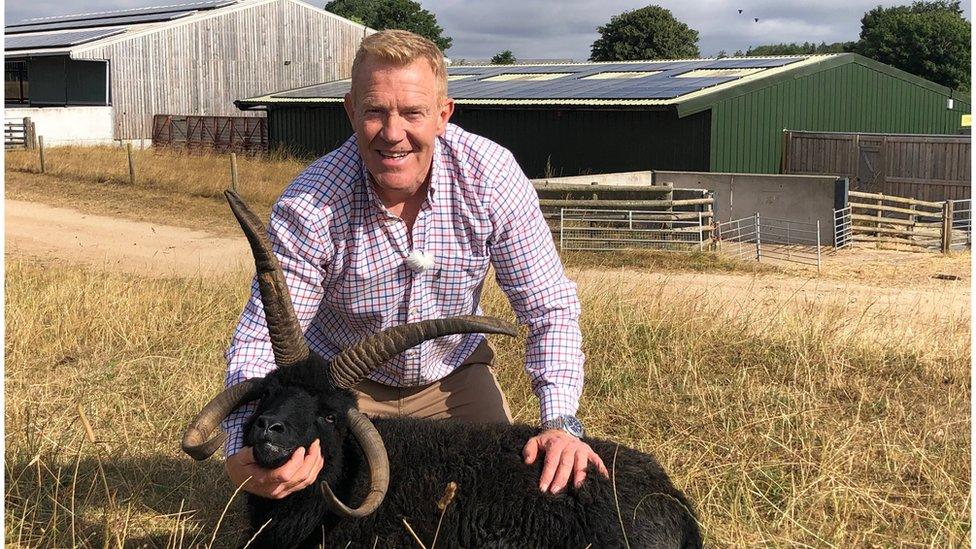
Countryfile star Adam Henson has invested in solar panels for his farm
A solar power firm has reported record demand from farms as the price of electricity has risen.
MyPower, based in the Cotswolds, has installed 27,000 panels in the past year, up from 7,000 in the previous 12 months.
Its managing director Ben Harrison said he believed energy price increases were behind the dramatic sales growth.
"Farms are facing rising electricity bills, and making your own power can help reduce that impact," he said.
Adam Henson was their most recent customer.
He runs the Cotswold Farm Park and is known for his reports on BBC One's Countryfile.
Mr Henson explained: "Dad started the farm park in 1971 and he farmed in a very environmentally-friendly way.
"So having solar is a step in the right direction towards a greener business."
But in an energy crisis solar panels may also save cash, as well as carbon emissions.
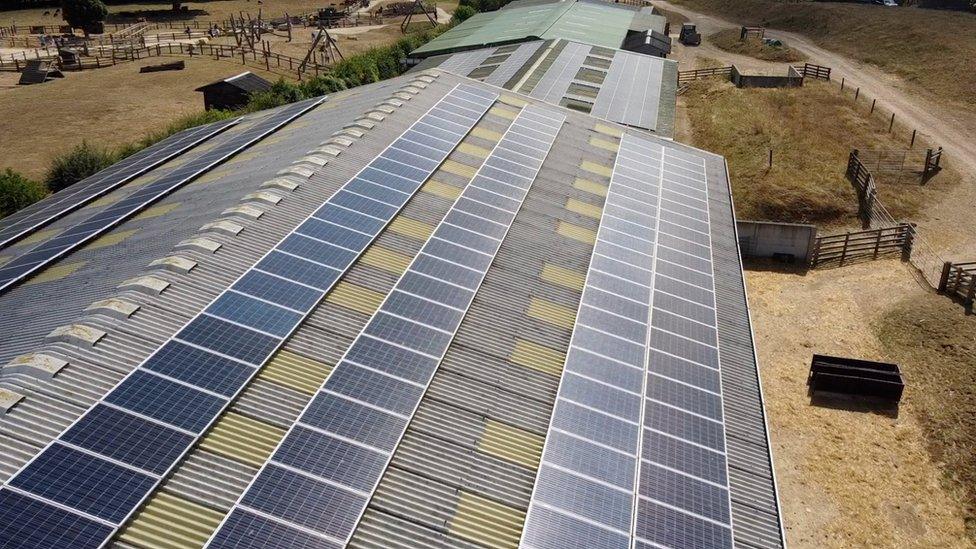
The solar panels at Cotswold Farm Park will produce about 20% of the farm's energy
Unlike domestic households, farms use a lot of power in the daytime for things like milking machines, dairy chillers, heaters to warm baby chicks and lighting in dark sheds.
They often have big sheds with rooftops that are easy to access and can easily support solar panels.
And while individual energy consumers are protected by the price cap on energy, businesses are not.
In the past year, commercial electricity prices have gone from 15p per kWh to 45p/kWh.
Adam Henson said: "The solar is costing us four to five pence a unit, so the return on our investment is only three to four years."
"And we're doing the right thing."
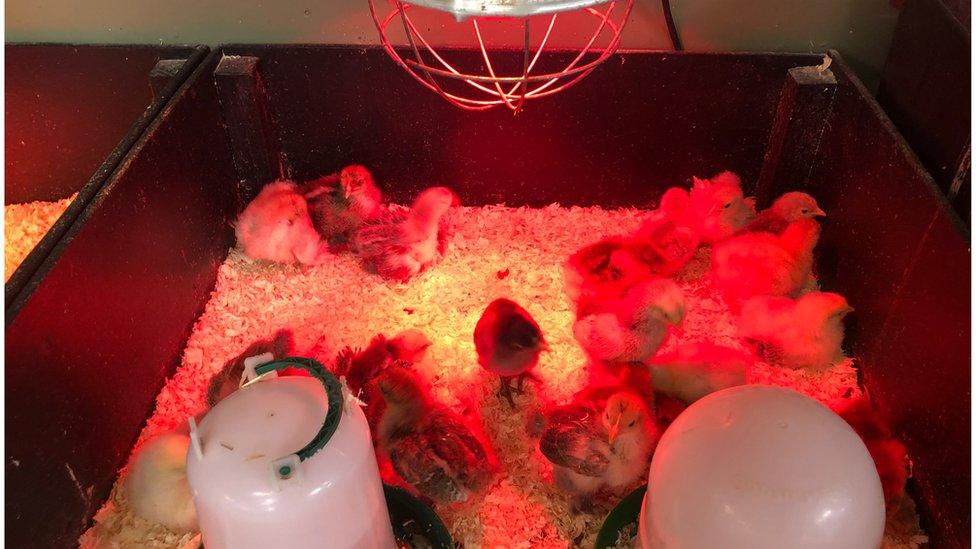
Baby chicks at the Cotswold Farm Park warmed by heat lamps which are now powered by the sun
The Cotswold Farm Park is not a typical farm.
There are several hundred of acres of arable land, but mostly it is a demonstration farm designed to show the public how farming works.
'Business is booming'
There are tiny chicks, warmed by heat lamps, baby lambs that children can bottle feed, and electric tractors to ride around on.
On a good day, all are now powered by the sun.
But what about regular commercial farms?
"Our business is absolutely booming", says Ben Harrison.
"Farms, factories, cold storage units, you name it.
"All businesses that use electricity during the day are desperate for solar energy".
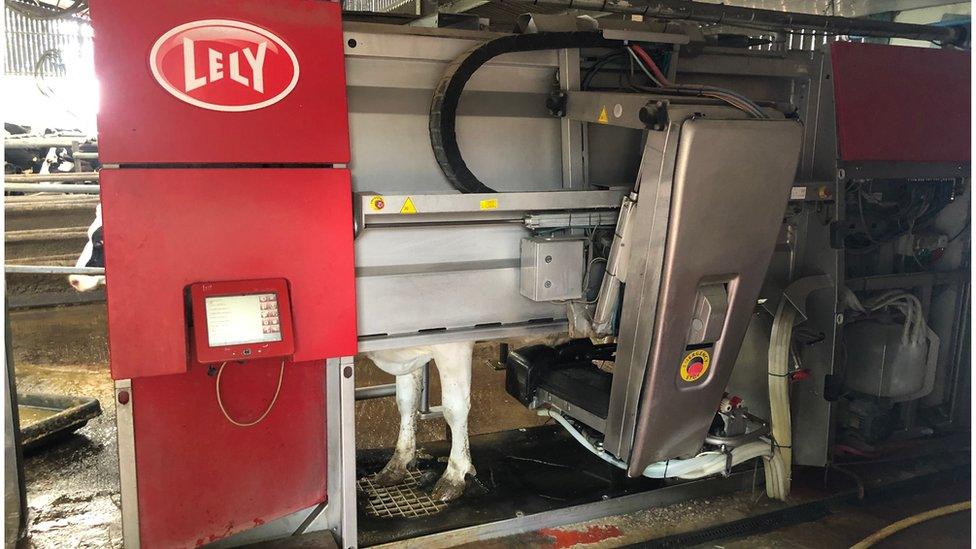
A robot milking machine on Clive Slatter's farm uses a lot of electricity
Ten miles from Adam Henson's farm I meet Clive Slatter, who runs 600 dairy cattle high on the Cotswolds near Northleach.
Two years ago he took the plunge and covered a cowshed with solar panels.
"It's saving me about £1,000 a month," he tells me.
Renewable robots
The panels produce about 40% of the electricity his farm uses.
Mr Harrison can analyse exactly when the power is made and used.
Until recently, he did not recommend solar for dairy farms, because they used to milk the cows early in the morning, and late in the day.
The sun was low in the sky then, so the energy-hungry milking machines had to be fed by mains power.
Robots have changed all that.
Hill House Farm may look like a traditional Cotswold farm, with muddy sheds and old stone walls, but it is home to new agri-tech.
A robot milking machine operates 24/7.
When a cow feels full of milk, she wanders along to the dairy machine, lasers line up her teats and the robot draws down the milk.
It means steady, all-day power demand, perfect for solar production.
"The solar has a massive impact on our electricity bill," said Mr Slatter.
But, like so many tales on the farm, there's a twist in this tale.
Clive Slatter would love to put more solar on his rooftops, but he's hit his legal limit.
"We can easily put loads more panels on, but the restrictions from the grid prevent that."
Why, I wonder, do the authorities cap the number of solar panels he can install?
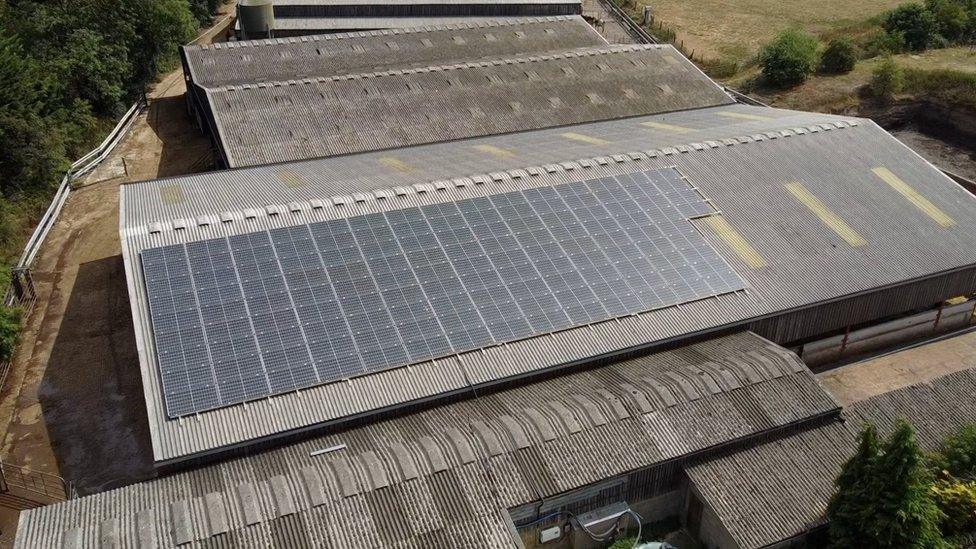
Too much surplus electricity could blow the local network
It turns out this is a big problem across the country.
The National Grid has to keep the electricity network safe.
If Mr Slatter uses none of his own solar power, for whatever reason, then the electricity is automatically transmitted back to the grid.
But the cables that feed his farm, like most others, are only designed to carry low wattages, capped in his case at 18,000 KW.
If his system grows and produces more power, it could blow the whole network locally.
Ben Harrison said he comes up against this problem a lot, and ministers need to act.
He said: "The government needs to invest in this infrastructure, upgrade the cabling that was designed for a different age.
"Anyone can be a power station now, and we need all the energy we can make in this country."

Follow BBC West on Facebook, external, Twitter, external and Instagram, external. Send your story ideas to: bristol@bbc.co.uk , external
- Published4 August 2022
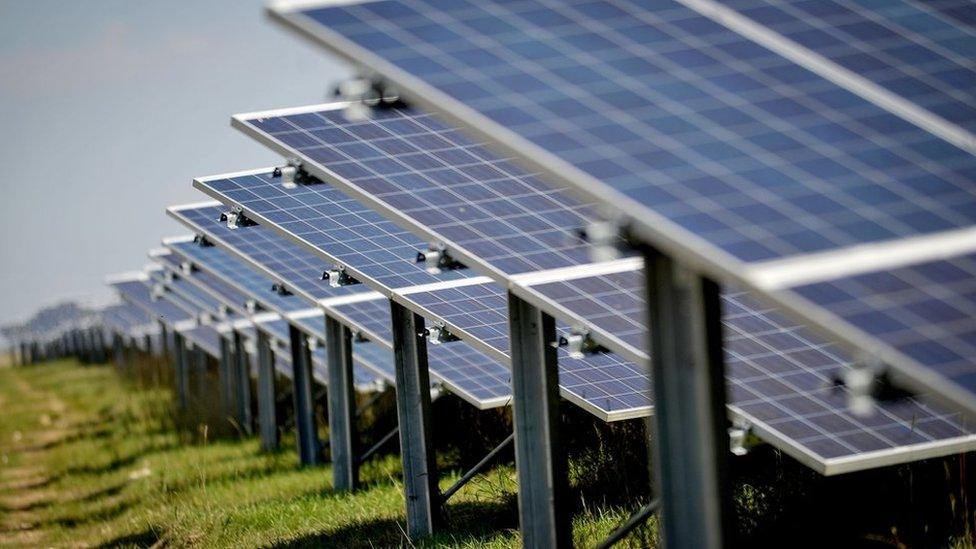
- Published19 July 2022
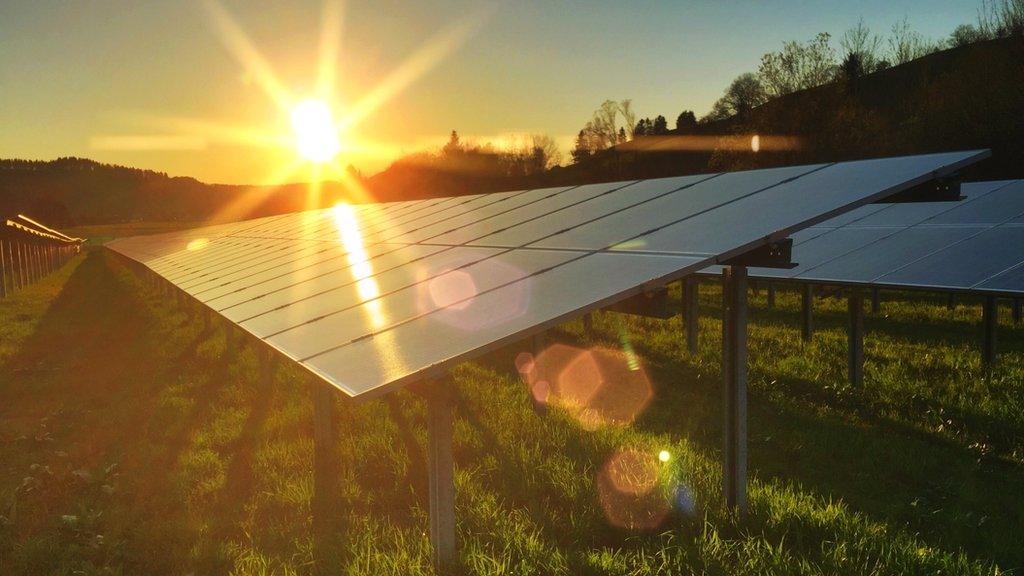
- Published15 June 2022
